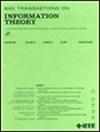On the Convergence of (Stochastic) Gradient Descent for Kolmogorov–Arnold Networks
IF 2.9
3区 计算机科学
Q3 COMPUTER SCIENCE, INFORMATION SYSTEMS
引用次数: 0
Abstract
Kolmogorov–Arnold Networks (KANs), a recently proposed neural network architecture, have gained significant attention in the deep learning community, due to their potential as a viable alternative to multi-layer perceptrons (MLPs) and their broad applicability to various scientific tasks. Empirical investigations demonstrate that KANs optimized via stochastic gradient descent (SGD) are capable of achieving near-zero training loss in various machine learning (e.g., regression, classification, and time series forecasting, etc.) and scientific tasks (e.g., solving partial differential equations). In this paper, we provide a theoretical explanation for the empirical success by conducting a rigorous convergence analysis of gradient descent (GD) and SGD for two-layer KANs in solving both regression and physics-informed tasks. For regression problems, we establish using the neural tangent kernel perspective that GD achieves global linear convergence of the objective function when the hidden dimension of KANs is sufficiently large. We further extend these results to SGD, demonstrating a similar global convergence in expectation. Additionally, we analyze the global convergence of GD and SGD for physics-informed KANs, which unveils additional challenges due to the more complex loss structure. This is the first work establishing the global convergence guarantees for GD and SGD applied to optimize KANs and physics-informed KANs.关于Kolmogorov-Arnold网络(随机)梯度下降的收敛性
Kolmogorov-Arnold Networks (KANs)是最近提出的一种神经网络架构,由于其作为多层感知器(mlp)的可行替代方案的潜力以及对各种科学任务的广泛适用性,在深度学习社区获得了极大的关注。实证研究表明,通过随机梯度下降(SGD)优化的KANs能够在各种机器学习(如回归,分类和时间序列预测等)和科学任务(如求解偏微分方程)中实现接近零的训练损失。在本文中,我们通过对梯度下降(GD)和SGD进行严格的收敛分析来解决回归和物理信息任务,为经验成功提供了理论解释。对于回归问题,我们利用神经切线核的观点建立了当kan的隐维足够大时,GD实现目标函数的全局线性收敛。我们进一步将这些结果扩展到SGD,证明了期望的类似全球收敛。此外,我们分析了基于物理信息的KANs的GD和SGD的全球收敛性,这揭示了由于更复杂的损失结构而带来的额外挑战。这是第一个为GD和SGD建立全局收敛保证的工作,用于优化kan和物理知情的kan。
本文章由计算机程序翻译,如有差异,请以英文原文为准。
求助全文
约1分钟内获得全文
求助全文
来源期刊

IEEE Transactions on Information Theory
工程技术-工程:电子与电气
CiteScore
5.70
自引率
20.00%
发文量
514
审稿时长
12 months
期刊介绍:
The IEEE Transactions on Information Theory is a journal that publishes theoretical and experimental papers concerned with the transmission, processing, and utilization of information. The boundaries of acceptable subject matter are intentionally not sharply delimited. Rather, it is hoped that as the focus of research activity changes, a flexible policy will permit this Transactions to follow suit. Current appropriate topics are best reflected by recent Tables of Contents; they are summarized in the titles of editorial areas that appear on the inside front cover.
 求助内容:
求助内容: 应助结果提醒方式:
应助结果提醒方式:


